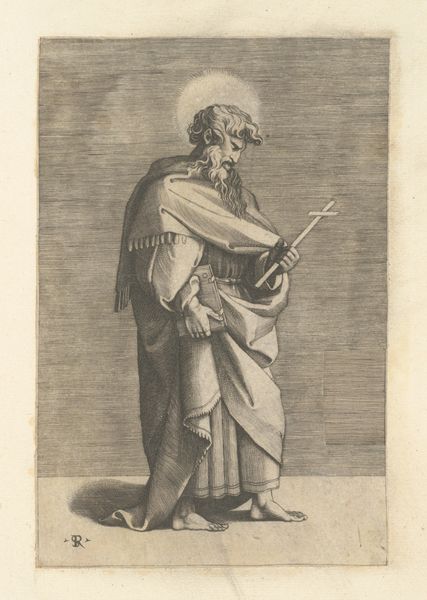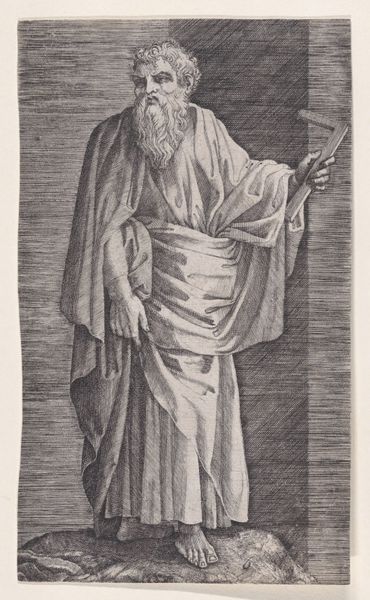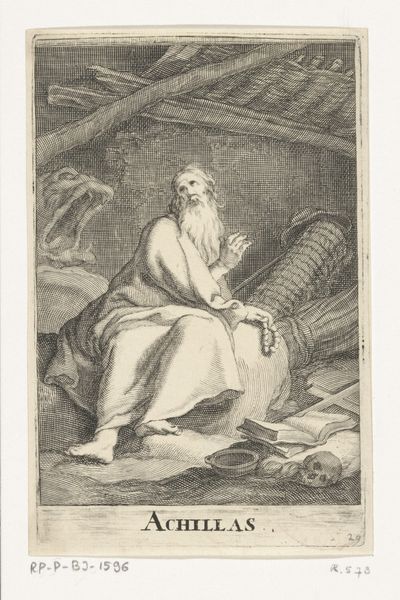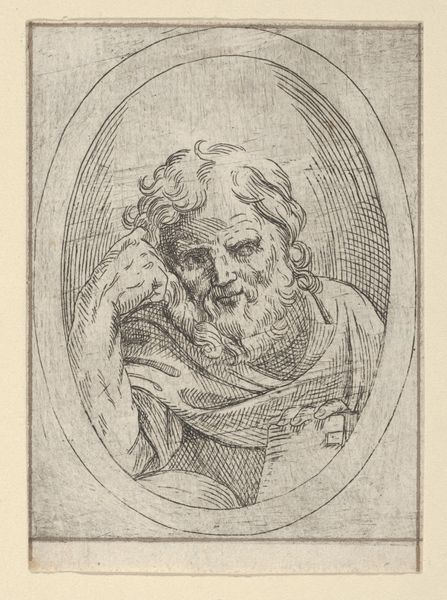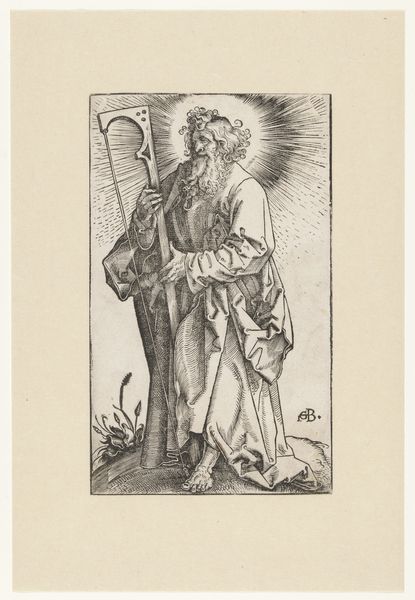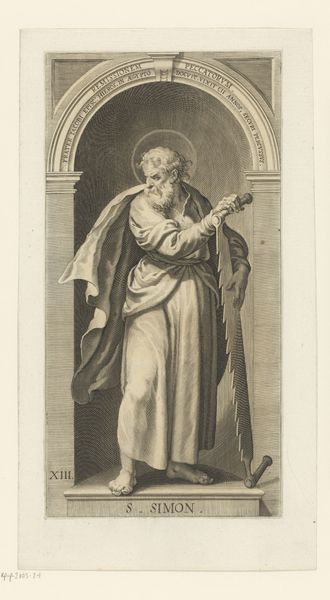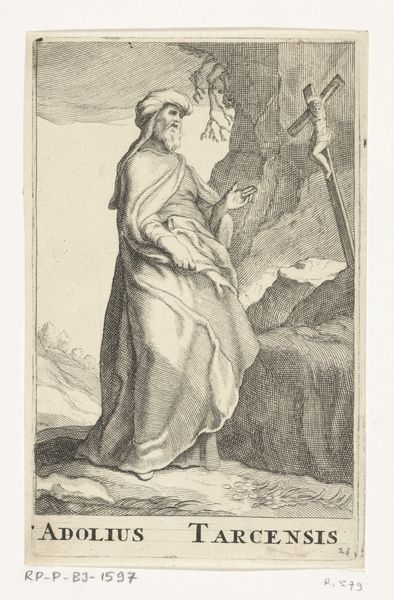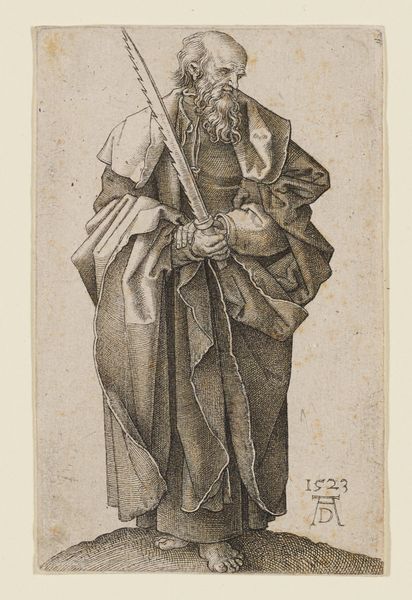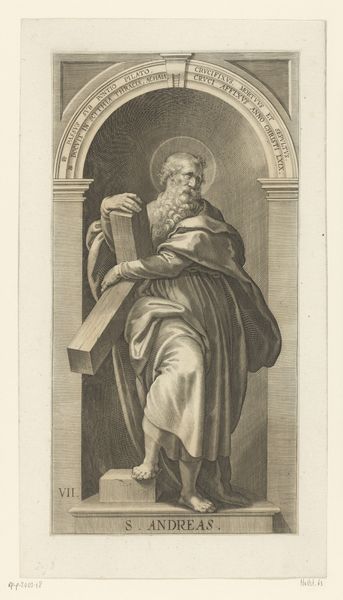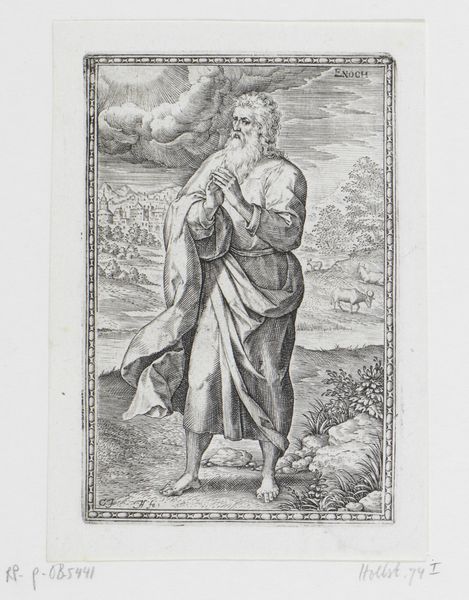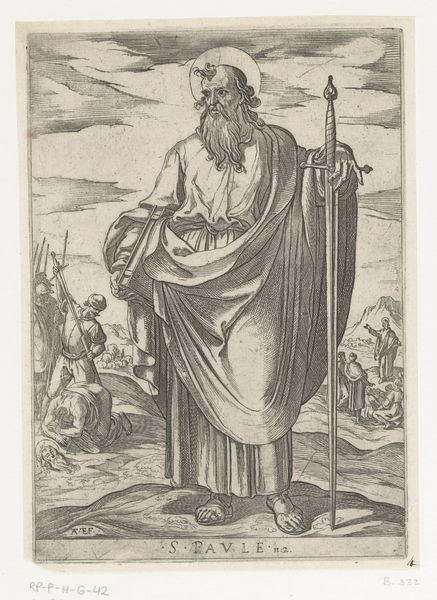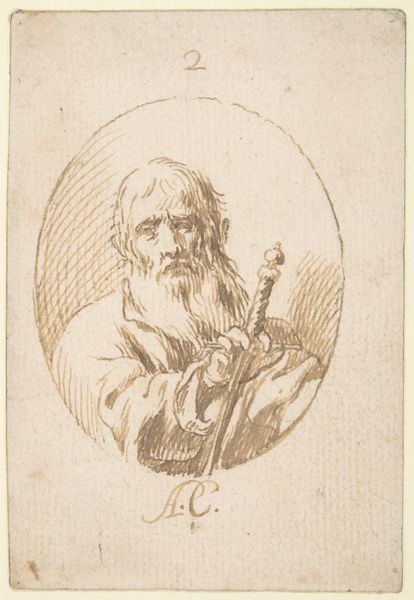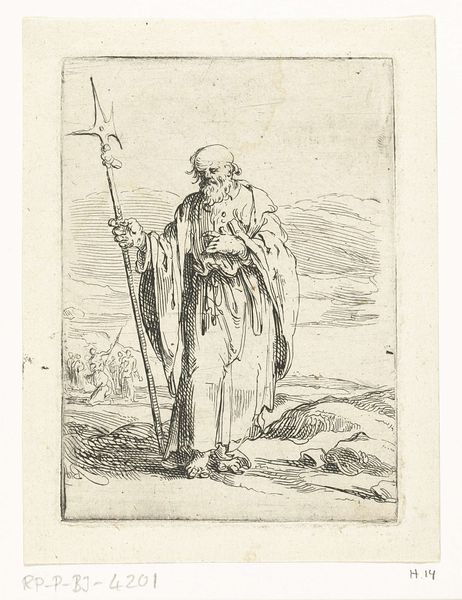
engraving
#
portrait
#
medieval
#
landscape
#
portrait drawing
#
history-painting
#
engraving
#
sword
Dimensions: height 307 mm, width 208 mm
Copyright: Rijks Museum: Open Domain
Curator: Look at this engraving of Paulus, standing in a landscape, clutching both a book and a rather imposing sword. The Rijksmuseum dates it anywhere between 1589 and 1737, attributing it to Hendrick Goltzius, a master of the era. Editor: It strikes me as incredibly stern! He’s gazing off with such intensity, like he's daring anyone to challenge him. Is that landscape swirling around him supposed to represent inner turmoil, or perhaps just really bad weather? Curator: Ha! Well, Saint Paul was no pushover. He went from persecuting Christians to becoming a foundational figure, and this image, to me, encapsulates that transformation, the internal wrestling before embracing a new doctrine. Note the almost theatrical drape of his robes and how that emphasizes his status. Editor: It's true, there’s an element of performance, and maybe it plays into the patriarchal reading: weapon in hand and standing authoritatively as if divinely sanctioned. Yet, the setting almost works against that imposing stance, like nature acknowledges something elemental happening. Was Goltzius commenting on the interplay between dogma and lived experience, even challenging its gendered assumption? Curator: Perhaps he was inviting it. An artist in the throes of the Dutch Golden Age could use historical painting and portraits as opportunities for not only commentary but challenging cultural power. Editor: The symbolism feels weighty – the book of faith juxtaposed with the sword as a symbol of either justice or violence— depending on how one wields it. In many contexts then and now, the symbolism in hand betrays whose voices go unheard, whose histories are left out of the telling. Curator: It’s compelling how the tools and symbols become signifiers. Here, Paul becomes less a singular figure and more a stand-in for complex ideologies. Editor: Indeed, and by viewing Paulus today, we can keep wrestling with that power and question whether any system or faith holds itself to account when their voice speaks the loudest. Curator: A worthwhile takeaway. I leave this today feeling challenged to check the balance of things and reflect more before speaking my own "truth" without checking on everyone first.
Comments
No comments
Be the first to comment and join the conversation on the ultimate creative platform.
